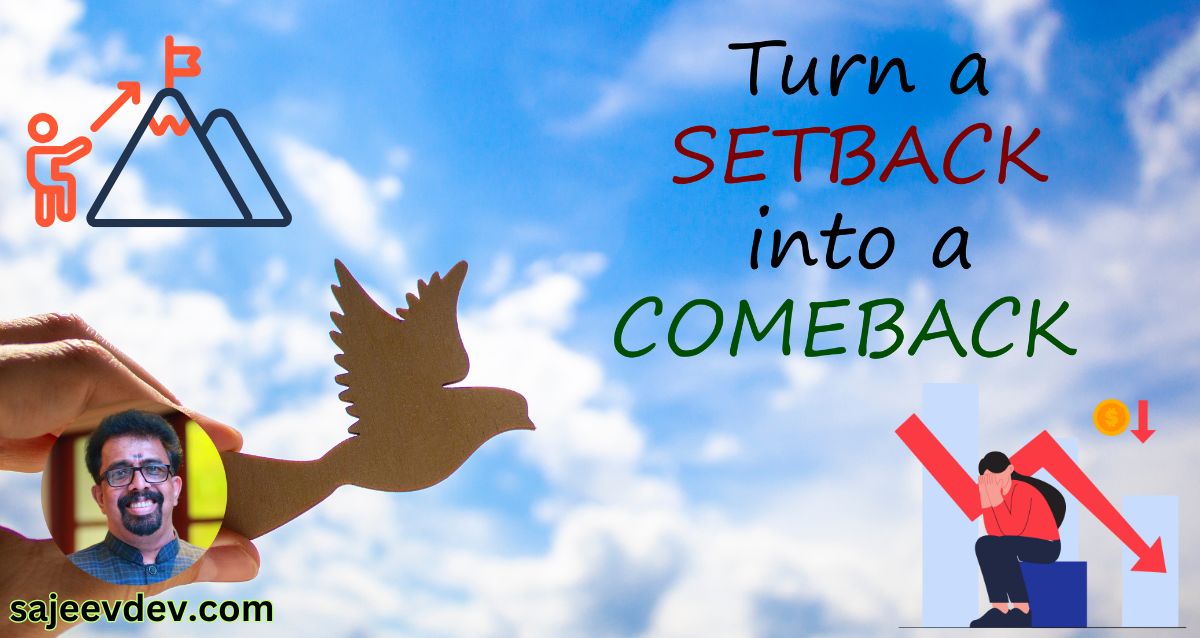Self-Imposed Barriers
Self-imposed barriers refer to the mental limitations and obstacles that individuals create for themselves, often without even realizing it. These barriers manifest in various forms, restricting personal growth and stifling potential. Some of the most common types of self-imposed barriers include negative self-talk, fear of failure, and limiting beliefs. Each of these barriers can significantly impact decision-making, goal-setting, and overall self-esteem.
Negative self-talk is perhaps one of the most pervasive forms of self-imposed barriers. It involves internal dialogues that are critical and discouraging. For example, when faced with a challenge, an individual might think, “I am not qualified enough” or “I will never succeed.” Such thoughts can lead to feelings of inadequacy and prevent individuals from pursuing opportunities that could facilitate growth. Recognizing and challenging these negative thoughts is essential in overcoming this barrier.
Fear of failure is another significant self-imposed barrier that often holds individuals back from taking risks. This fear can result from past experiences or a desire for perfection. It creates an environment where individuals avoid situations that may challenge them or lead to disappointment. By allowing this fear to dictate actions, one often misses out on valuable experiences that contribute to personal development.
Limiting beliefs represent another critical aspect of self-imposed barriers. These are convictions that individuals hold about their capabilities or the world around them, which can be deeply ingrained. For instance, a person may believe that they are incapable of pursuing a certain career solely based on past failures or the opinions of others. Recognizing these limiting beliefs and understanding their origins is a vital step toward breaking free from the constraints they impose.
By identifying and addressing these self-imposed barriers, individuals can pave the way for personal transformation and unleash their limitless potential.
Identifying Your Personal Barriers
To effectively break free from self-imposed barriers, individuals must first recognize and understand the specific obstacles that hinder their potential. One established method for identifying these barriers is journaling. By regularly documenting thoughts and feelings, individuals can observe patterns and recurring themes that indicate limiting beliefs. This practice encourages greater self-awareness, enabling a more profound understanding of the internal dialogue that contributes to self-imposed limitations.
Self-reflection is another crucial technique for unveiling personal barriers. Taking time for contemplation allows individuals to critically assess their thoughts, emotions, and reactions in various situations. Questions prompting self-exploration, such as “What fears hold me back?” or “When do I feel most restricted?” can facilitate insights into one’s mindset. Regularly engaging in self-reflection not only clarifies the underlying causes of one’s limitations but also fosters the courage needed to confront them.
Seeking feedback from trusted friends or mentors can also serve as a valuable tool in identifying personal barriers. These individuals can provide an outside perspective on behaviors or mindsets that may be unnoticed by the individual. Constructive criticism received from such sources can reveal blind spots and offer suggestions for overcoming perceived limitations, giving rise to new pathways for personal growth. Formulating open, honest communication with trusted allies about perceived self-imposed barriers can empower individuals to address these obstacles more directly.
Ultimately, identifying these barriers paves the way for personal development. By utilizing techniques like journaling, self-reflection, and external feedback, individuals can gain clarity on their constraints. This foundational understanding is critical for implementing effective strategies aimed at breaking free from the self-imposed limits that have restrained their full potential.
The Psychology Behind Limiting Beliefs
Limiting beliefs can be understood through various psychological theories that shed light on their formation and persistence in individuals. One significant concept is cognitive dissonance, which refers to the mental discomfort occurring when one holds two or more contradictory beliefs or when their beliefs do not align with their actions. For example, an individual may believe they are capable of achieving great success, yet simultaneously feel unworthy or incompetent. This internal conflict can lead to the reinforcement of limiting beliefs, as the mind seeks to resolve the dissonance by rationalizing failures or shortcomings.
Another critical component in understanding limiting beliefs is confirmation bias. This psychological phenomenon describes the tendency for individuals to seek out, interpret, and remember information that confirms their pre-existing beliefs while disregarding information that may challenge them. For instance, a person who believes they are not good at public speaking may focus solely on instances where they struggled rather than acknowledging any successes. This selective perception can create a reinforcing loop where the limiting belief becomes increasingly entrenched, making it difficult for the individual to break free from self-imposed barriers.
Moreover, past experiences significantly contribute to the development of limiting beliefs. Catastrophic events, failures, or negative feedback can imprint profound impressions on individuals, shaping their self-concept and influencing their future behavior. For children, formative years are crucial, as they are especially susceptible to external perceptions, leading some to internalize negative beliefs about their abilities. Understanding this connection between past experiences and limiting beliefs allows for a more profound reflection on one’s own thought patterns and behaviors.
By acknowledging the psychological mechanisms behind limiting beliefs, individuals can begin to dissect and challenge their self-imposed constraints. Addressing cognitive dissonance, overcoming confirmation bias, and reevaluating past experiences are essential steps to unlocking one’s potential.
Challenging Negative Self-Talk
Negative self-talk can significantly impede personal growth and limit potential. Recognizing the detrimental effects of such inner dialogues is the first step toward transformation. By challenging these negative thoughts, individuals can begin to reshape their mindset, allowing for greater self-confidence and a more encouraging inner script. Practical exercises play a crucial role in this journey, equipping individuals with the tools needed to cultivate a more positive mental framework.
One effective technique is the “thought record” exercise. This involves writing down negative thoughts as they occur and categorizing them into specific types, such as catastrophizing, labeling, or overgeneralization. By identifying these cognitive distortions, individuals can more easily debunk their inaccuracies. After listing each negative thought, it’s essential to replace it with a positive affirmation that counters the negativity. For instance, transforming “I always fail at this” into “I have succeeded in the past and I can try again.” This process not only offers immediate relief but also instills a more optimistic outlook over time.
Another powerful approach is visualization. By envisioning success and positive outcomes, individuals can reinforce their belief in their capabilities. Spend a few minutes each day imagining not just the end result but also the steps necessary to achieve it. This powerful practice shifts focus from doubts to possibilities, creating a stronger belief in one’s potential. Ultimately, engaging in these exercises consistently fosters an internal environment where positive self-talk thrives.
Furthermore, surrounding oneself with supportive and positive language can aid in transforming negative self-perception. Engage in discussions with encouraging peers, read motivational literature, and practice self-compassion. By altering the language in one’s inner dialog, individuals can challenge deep-rooted self-doubt effectively, paving the way toward a limitless potential and a more rewarding personal journey.
Embracing a Growth Mindset
Adopting a growth mindset is crucial for breaking free from self-imposed barriers. Coined by psychologist Carol Dweck, the concept of a growth mindset refers to the belief that abilities and intelligence can be developed through dedication, hard work, and learning. By shifting our perspective in this manner, we can cultivate resilience, curiosity, and a passion for learning. This transformation allows individuals to view challenges not as impediments, but as opportunities for growth and development.
To embrace a growth mindset, one can start by actively challenging negative self-talk and beliefs. When faced with a difficult task, instead of thinking, “I will never be able to do this,” reframe the thought to, “What can I learn from this experience?” This simple shift not only opens the door to new possibilities but also fosters an environment of self-improvement. Additionally, seeking feedback from others can enhance our understanding of our strengths and areas for growth. Constructive criticism should be viewed as a valuable resource rather than a threat to our self-worth.
Cultivating curiosity is another essential step in developing a growth mindset. Engage with new ideas, perspectives, and challenges. Pursuing interests outside of one’s comfort zone can lead to personal growth and often spark inspiration in various aspects of life. For instance, taking up a hobby or enrolling in a course can broaden our horizons and enrich our experiences. Furthermore, fostering a love for learning helps individuals become more adaptable in an ever-changing world.
In essence, adopting a growth mindset involves a commitment to constant self-improvement and adaptability. By nurturing resilience and curiosity, individuals can dismantle the self-imposed barriers that keep them from realizing their full potential. Recognizing that every challenge presents an opportunity for growth is key to unlocking limitless possibilities in life.
Setting Achievable Goals
Setting achievable goals is a critical step in the journey of breaking free from self-imposed barriers. To begin with, it is essential to define what constitutes an attainable goal. Achievable goals should be realistic, relevant, and tailored to foster personal growth. Rather than aiming for large and overwhelming objectives, individuals are encouraged to break these goals into smaller, incremental steps. This approach not only makes the tasks seem less daunting but also promotes a sense of accomplishment as each smaller milestone is achieved.
Incremental progress plays a vital role in maintaining motivation. When individuals set smaller, more manageable targets, they create opportunities to celebrate successes along the way. This celebration reinforces positive behavior and encourages continued effort. For instance, if the ultimate goal is to run a marathon, a more achievable initial goal could be to complete a 5K. Once that target is reached, the individual can increase the distance gradually, building confidence and endurance over time.
Accountability also plays a significant role in goal achievement. By sharing goals with trusted friends, mentors, or support groups, individuals are more likely to stay committed to their plans. This external accountability can help individuals push through challenges and resist the temptation to revert to comfort zones. Additionally, progress tracking methods, such as journals or progress charts, can provide visual feedback, reinforcing a sense of responsibility and accountability. By documenting achievements, individuals remind themselves of how far they have come, further motivating them to keep pushing forward.
In essence, setting achievable goals not only facilitates personal growth but also establishes a pathway toward realizing one’s full potential. With a focus on incremental progress and a solid support system, individuals are well-equipped to embark on their journey of self-improvement and barrier-breaking.
The Power of Visualization
Visualization is a transformative technique that capitalizes on the mind’s natural ability to create mental images. It can serve as a cornerstone for personal development, enabling individuals to break free from the self-imposed barriers that hinder their progress. By developing clear and vivid mental representations of their goals, individuals can amplify their belief in their potential while motivating them to take tangible steps toward success.
The process of visualization involves more than merely envisioning a desired outcome; it requires genuine engagement of the senses. By creating detailed mental images that incorporate not only what one wishes to achieve but also how it would feel to reach that goal, individuals can trigger emotional connections that reinforce their commitment. For instance, envisioning the sights, sounds, and feelings associated with achieving a personal aspiration can evoke a powerful emotional response that propels one forward. This emotional linkage fosters a mindset that is more conducive to positive action.
Numerous studies have demonstrated the efficacy of visualization in enhancing performance across various domains, including sports, academics, and personal development. By consistently visualizing their aspirations, individuals train their minds to focus on possibilities rather than limitations. This shift in focus can unveil hidden resources, encouraging creative solutions to obstacles that may have seemed insurmountable. Ultimately, the technique of visualization empowers individuals to cultivate a growth mindset, allowing them to see potentials rather than constraints.
To implement this strategy in daily life, individuals should allocate time for regular visualization practice, ideally in a quiet and comfortable setting. During these sessions, one can vividly imagine achieving their ambitions, visualizing each step along the path to success. Through consistent practice, the power of visualization becomes a valuable ally in overcoming mental barriers and nurturing an unwavering belief in one’s limitless potential.
Building a Support System
Developing a support system is crucial for individuals seeking to overcome self-imposed barriers that hinder personal growth. A strong community not only offers emotional support but also provides motivation, encouragement, and diverse perspectives that can inspire new solutions to challenges. Engaging with others who share similar aspirations or experiences allows individuals to realize they are not alone in their struggles, which can lead to a more fulfilling journey.
There are various types of relationships that contribute to effective support systems. First, peers with shared goals can foster a sense of camaraderie, providing an environment where individuals can share their experiences and strategies for overcoming obstacles. Moreover, mentors play an invaluable role, offering guidance based on their own experiences while encouraging personal accountability. These one-on-one relationships can be particularly impactful, as they ensure personalized advice and insights tailored to the mentee’s unique situation.
Additionally, communities that promote personal growth—such as clubs, online forums, or local meetups—can be instrumental in connecting members with others who may have faced similar challenges. Such environments promote the exchange of ideas and resources, helping individuals to gain confidence in their capabilities. Furthermore, actively participating in these groups can lead to friendships that surpass mere networking; supportive bonds often arise organically, enhancing one’s sense of belonging.
To cultivate a beneficial support network, one can start by reaching out to individuals within existing circles, and expressing intentions to foster deeper connections. Attending workshops, networking events, and interest-based gatherings can also introduce new, like-minded individuals into one’s life. By prioritizing quality over quantity, focusing on genuine connections will yield a more effective support system that inspires growth and resilience in the pursuit of breaking free from self-imposed barriers.
Celebrating Progress and Success
Recognizing and celebrating progress, regardless of its magnitude, is a crucial aspect of personal development. Each achievement, no matter how small, serves as a testament to our abilities and reinforces our belief in our potential. By acknowledging these milestones, we cultivate a positive mindset that propels us further along our journeys. It is important to remember that every step forward counts, as they collectively contribute to larger successes in our lives.
One effective approach to celebrating achievements is to maintain a journal where you can document your progress. By tracking your experiences, you allow yourself to reflect on the journey, articulate your feelings, and recognize the growth you have made over time. This written record serves as a source of motivation during challenging times, reminding you of the strides you have taken towards your goals. Additionally, sharing your successes with friends or family members can further enhance the celebratory experience, providing you with external validation and support.
Incorporating rewards into your routine can also amplify the significance of your achievements. When you reach a specific goal, consider treating yourself to something special—a favorite meal, a new book, or even a day off to indulge in your hobbies. These rewards create a pleasurable association with your accomplishments, making it more likely that you will continue to strive for success in the future.
Moreover, celebrating progress can take the form of personal reflection or meditation. Allowing yourself time to contemplate your journey fosters a deeper understanding of your strengths and weaknesses. Engaging in these practices not only enhances self-awareness but also inspires continued growth. As you build a habit of celebrating your progress, you create a positive feedback loop that reinforces your resilience and determination to overcome self-imposed barriers.



